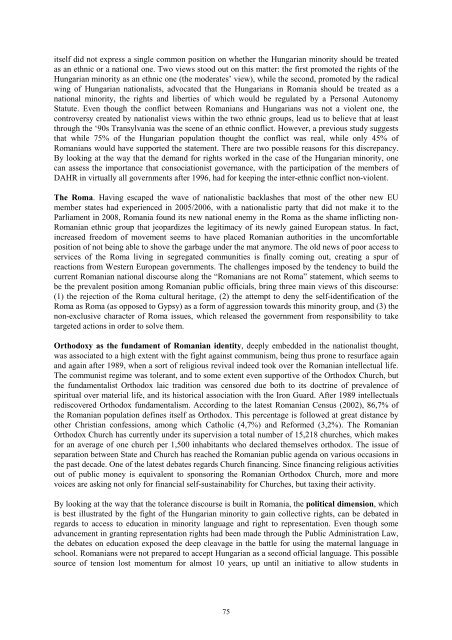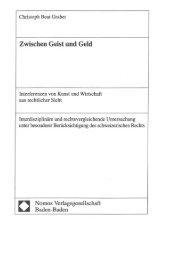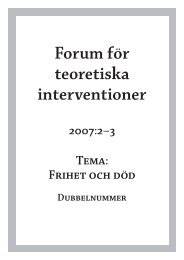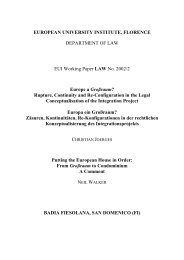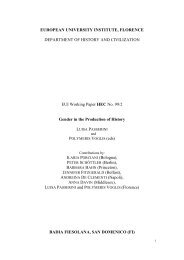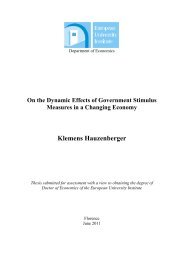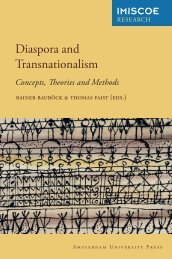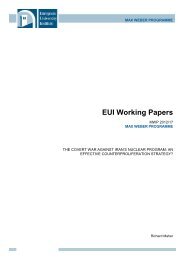Sinziana-Elena Poiana Ioana Lupea Irina-Madalina Doroftei Alina ...
Sinziana-Elena Poiana Ioana Lupea Irina-Madalina Doroftei Alina ...
Sinziana-Elena Poiana Ioana Lupea Irina-Madalina Doroftei Alina ...
Create successful ePaper yourself
Turn your PDF publications into a flip-book with our unique Google optimized e-Paper software.
itself did not express a single common position on whether the Hungarian minority should be treated<br />
as an ethnic or a national one. Two views stood out on this matter: the first promoted the rights of the<br />
Hungarian minority as an ethnic one (the moderates’ view), while the second, promoted by the radical<br />
wing of Hungarian nationalists, advocated that the Hungarians in Romania should be treated as a<br />
national minority, the rights and liberties of which would be regulated by a Personal Autonomy<br />
Statute. Even though the conflict between Romanians and Hungarians was not a violent one, the<br />
controversy created by nationalist views within the two ethnic groups, lead us to believe that at least<br />
through the ‘90s Transylvania was the scene of an ethnic conflict. However, a previous study suggests<br />
that while 75% of the Hungarian population thought the conflict was real, while only 45% of<br />
Romanians would have supported the statement. There are two possible reasons for this discrepancy.<br />
By looking at the way that the demand for rights worked in the case of the Hungarian minority, one<br />
can assess the importance that consociationist governance, with the participation of the members of<br />
DAHR in virtually all governments after 1996, had for keeping the inter-ethnic conflict non-violent.<br />
The Roma. Having escaped the wave of nationalistic backlashes that most of the other new EU<br />
member states had experienced in 2005/2006, with a nationalistic party that did not make it to the<br />
Parliament in 2008, Romania found its new national enemy in the Roma as the shame inflicting non-<br />
Romanian ethnic group that jeopardizes the legitimacy of its newly gained European status. In fact,<br />
increased freedom of movement seems to have placed Romanian authorities in the uncomfortable<br />
position of not being able to shove the garbage under the mat anymore. The old news of poor access to<br />
services of the Roma living in segregated communities is finally coming out, creating a spur of<br />
reactions from Western European governments. The challenges imposed by the tendency to build the<br />
current Romanian national discourse along the “Romanians are not Roma” statement, which seems to<br />
be the prevalent position among Romanian public officials, bring three main views of this discourse:<br />
(1) the rejection of the Roma cultural heritage, (2) the attempt to deny the self-identification of the<br />
Roma as Roma (as opposed to Gypsy) as a form of aggression towards this minority group, and (3) the<br />
non-exclusive character of Roma issues, which released the government from responsibility to take<br />
targeted actions in order to solve them.<br />
Orthodoxy as the fundament of Romanian identity, deeply embedded in the nationalist thought,<br />
was associated to a high extent with the fight against communism, being thus prone to resurface again<br />
and again after 1989, when a sort of religious revival indeed took over the Romanian intellectual life.<br />
The communist regime was tolerant, and to some extent even supportive of the Orthodox Church, but<br />
the fundamentalist Orthodox laic tradition was censored due both to its doctrine of prevalence of<br />
spiritual over material life, and its historical association with the Iron Guard. After 1989 intellectuals<br />
rediscovered Orthodox fundamentalism. According to the latest Romanian Census (2002), 86,7% of<br />
the Romanian population defines itself as Orthodox. This percentage is followed at great distance by<br />
other Christian confessions, among which Catholic (4,7%) and Reformed (3,2%). The Romanian<br />
Orthodox Church has currently under its supervision a total number of 15,218 churches, which makes<br />
for an average of one church per 1,500 inhabitants who declared themselves orthodox. The issue of<br />
separation between State and Church has reached the Romanian public agenda on various occasions in<br />
the past decade. One of the latest debates regards Church financing. Since financing religious activities<br />
out of public money is equivalent to sponsoring the Romanian Orthodox Church, more and more<br />
voices are asking not only for financial self-sustainability for Churches, but taxing their activity.<br />
By looking at the way that the tolerance discourse is built in Romania, the political dimension, which<br />
is best illustrated by the fight of the Hungarian minority to gain collective rights, can be debated in<br />
regards to access to education in minority language and right to representation. Even though some<br />
advancement in granting representation rights had been made through the Public Administration Law,<br />
the debates on education exposed the deep cleavage in the battle for using the maternal language in<br />
school. Romanians were not prepared to accept Hungarian as a second official language. This possible<br />
source of tension lost momentum for almost 10 years, up until an initiative to allow students in<br />
75


